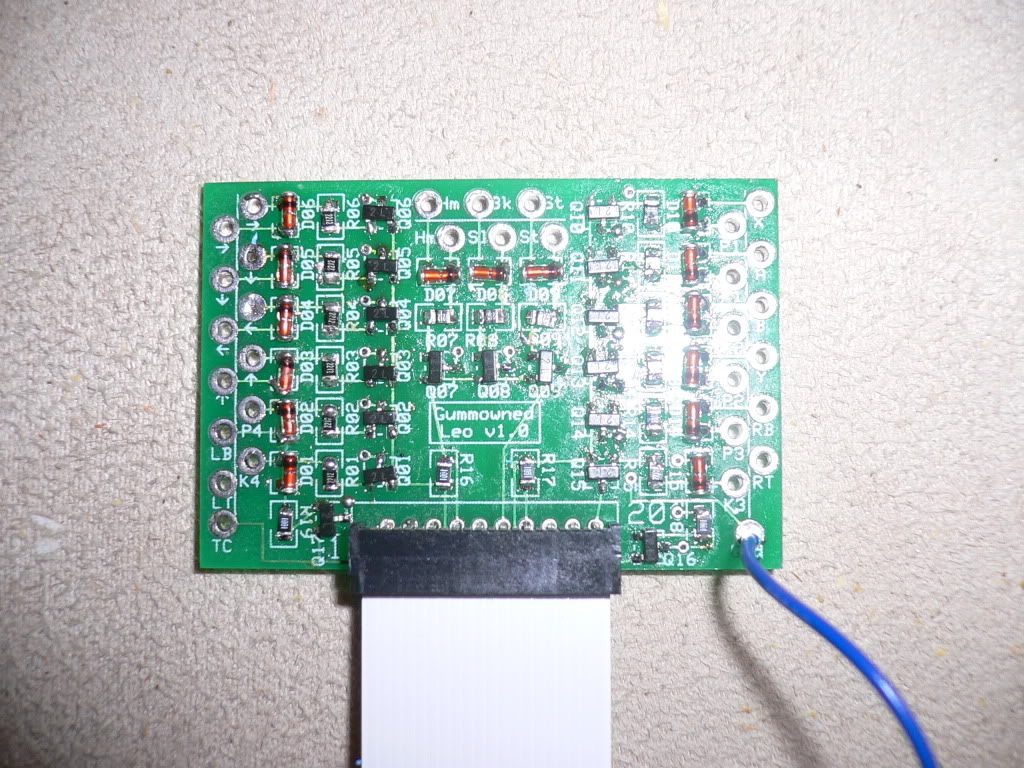As explained in my last build, people have been ‘padhacking’ for years, taking the guts of a perfectly fine pad and soldering buttons to them. That basic concept has extended to a ‘dual mod’, whereby two different pcbs are wired together then wired to the buttons. When the appropriate plugs wired to the pcb, it’s possible to use one stick for, say, a Playstation 2 and a Xbox. Of course, it’s much more involved than it sounds. Over the years, people with much more electronic experience have made custom boards that make it easier (relatively, anyway) to use your fightstick with more than one console. One of the more popular boards is Toodle’s Cthulhu board (which you can read extensively about here). The board interfaces directly with a PS3 or a PC, allowing you to use your custom fightstick on either machine. It also has software coded in its chip to allow you to use the stick with a Playstation, Xbox, Gamecube, etc, provided you solder the appropriate machine’s controller cable to the board. Alternately, you could wire up a RJ45 jack and use RJ45 connectors for each system you wanted to use , like so:
(for more info, you can go here). In order to use the stick in conjunction with an Xbox 360, however, you still need to padhack an actual Xbox pad. Microsoft has seen fit to install some special coding that will not allow a third party controller to work without it (even though it still hooks up to an USB cable. So much for the universal part). Many people have used the Cthulhu board along with a pcb from a 360 pad (the MadCatz 4716 is pretty popular) for their custom projects, and there are also plenty of people that have modified their MadCatz TE and SE fightsticks to be used on both PS3 and 360. However, those solutions still involve running a USB cable to the console to use it. If you want a factory wireless fightstick, you’re choices are pretty slim (recently, Hori released a wireless stick to coincide with Tekken 6, but the stock parts are the Hori stuff, not the genuine arcade parts. Plus, the PS3 version needs a stupid dongle, and I really hate dongles….). Granted, most tournament players prefer using a stick connected via USB, to ensure there’s no chance of lag, interference, dead battery at the wrong time, etc. Still, having a wireless stick eliminates carrying around a 10-15 foot USB cable and negates the possibility of your little brother tripping over the cable and pulling your console off the shelf (remember those SNES days? I know I’m not the only one…). And, as I mentioned before, if I have a wireless pad, why not a wireless fightstick?
So, why haven’t there been many wireless dual mod setups? Mainly because of how the boards are wired. For a dual mod to work, both pcbs must be ‘common ground’, and all the ground lines of each board, along with the buttons, joystick, battery, etc, need to be wired together. While it is possible to find a common ground 360 pad, as discussed in the last build, the PS3 pcb is not common ground. To get a wireless dual mod setup to work, you would need some extraordinary soldering skills, a pretty good knowledge of electronics, a handful of transistors, resisters, inverters, breadboards, very thin gauge wire and the patience of a saint. If so, you could produce something that looked like this:
Told you, not for the faint of heart...
All those parts were soldered BY HAND. Gummowned is the man!


No comments:
Post a Comment